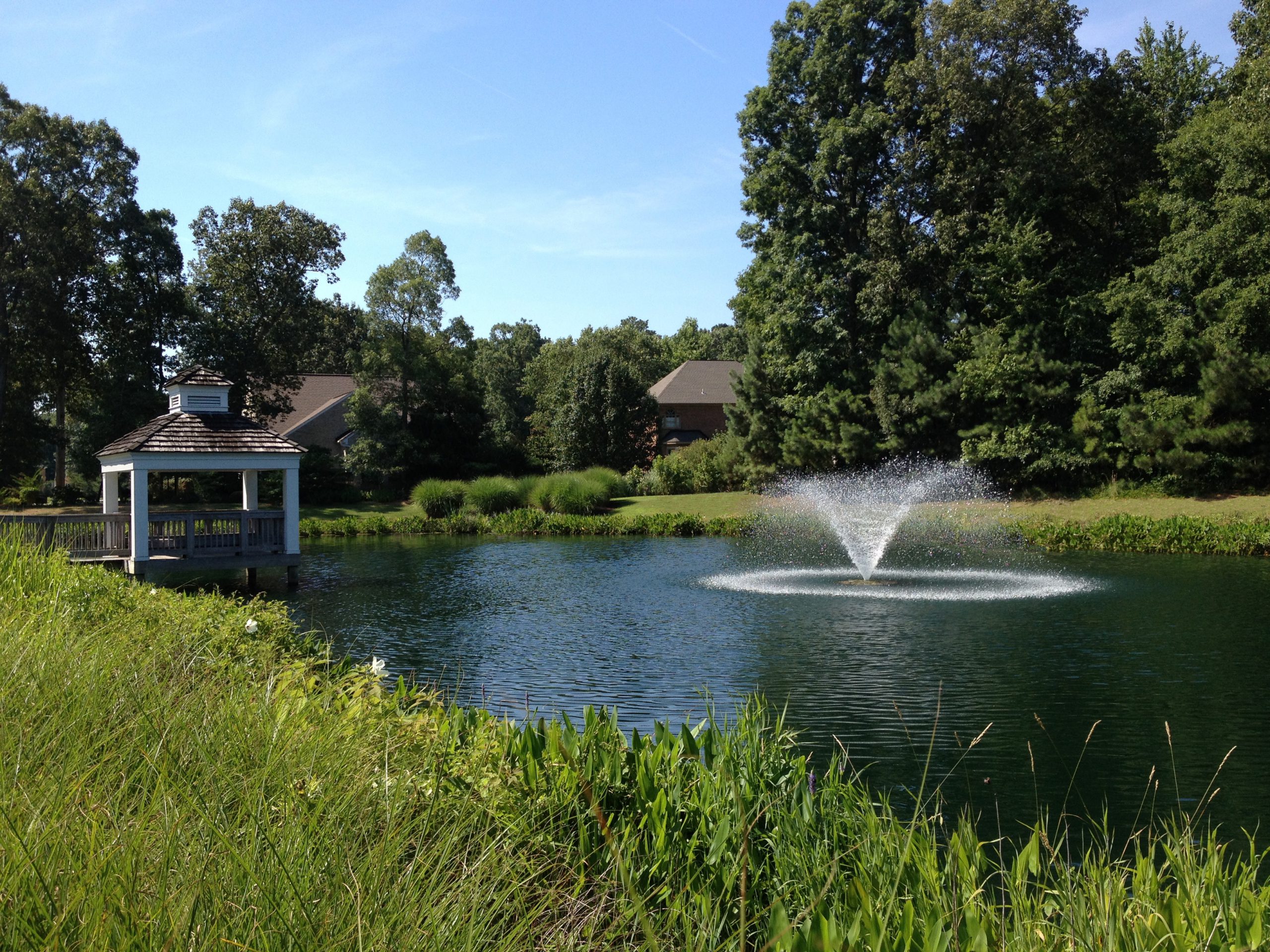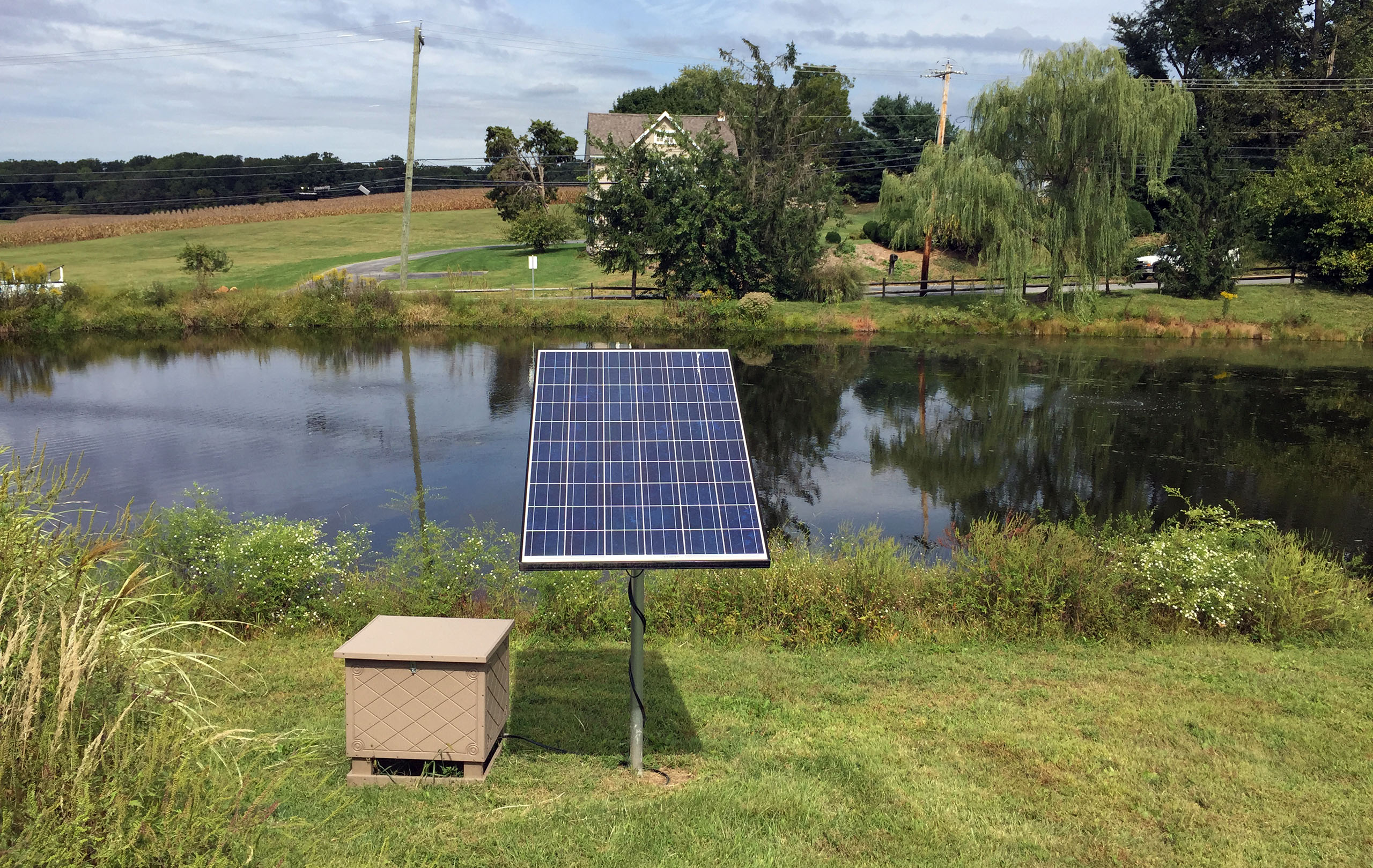The Nuts and Bolts—and Bubbles—of Lake and Pond Aeration
September 26th, 2017
AS SEEN IN CAI ROCKY MOUNTAIN: Written by Industry Expert Shannon Junior, Aquatic Ecologist and Senior Business Development Consultant
 There are few events that can occur in a community pond that cause the amount of anxiety and uproar among the residents as a fish kill. Sure, we get plenty of calls about lake and pond algae blooms and clogged fountains and excessive trash, but nothing creates the level of panic that ensues when there are dead fish floating on the surface of the water. Many residents become concerned that there may have been a toxic spill or illegal dumping incident, or they think that the landscaping company must have used something on the surrounding property that killed the fish. In reality though, most fish kills occur not because of a poisonous substance, but because of low dissolved oxygen conditions in the water.
There are few events that can occur in a community pond that cause the amount of anxiety and uproar among the residents as a fish kill. Sure, we get plenty of calls about lake and pond algae blooms and clogged fountains and excessive trash, but nothing creates the level of panic that ensues when there are dead fish floating on the surface of the water. Many residents become concerned that there may have been a toxic spill or illegal dumping incident, or they think that the landscaping company must have used something on the surrounding property that killed the fish. In reality though, most fish kills occur not because of a poisonous substance, but because of low dissolved oxygen conditions in the water.
Although fish respire through gills instead of lungs, they still require oxygen to survive. Since very warm water cannot hold the same amount of oxygen as colder water, dissolved oxygen can become depleted during the summer months. Because many stormwater management ponds are fairly shallow, with water only flowing in during and after rain events, sunlight is able to penetrate throughout the water column, causing the water to become very warm and stagnant. Deeper ponds may experience a phenomenon called “stratification,” where the warmer water at the surface of the pond does not mix with the colder, denser water near the bottom. The bottom water does not recharge with oxygen from photosynthesis or interaction with atmospheric oxygen, so fish can only survive in the upper part of the water column. During a large rainstorm or wind event, the pond can “turn over,” mixing the low oxygen bottom water throughout the rest of the pond. Low oxygen related fish kills can occur in both shallow and deep ponds if the conditions are right – Or WRONG, in this case.

So, what can be done to reduce the risk of a fish kill in a pond or lake? The best approach is to implement a comprehensive, ongoing maintenance program that includes integrated pond management strategies for algae and weed control and water quality management. One of the best practices for water quality improvement is the installation of aeration equipment to circulate the water and improve dissolved oxygen levels throughout the water column. There are many different types of aeration systems available, although the most commonly used are surface aerating fountains and submersed diffused air aeration systems. While both types of aerators can be extremely effective, each one has certain features that would make it the appropriate choice depending on the characteristics of a particular waterbody. And those without electrical access near their lake or pond are not out of luck. Windmill and solar-powered aeration systems are a more ecologically-friendly option, and can be used to enhance aeration in more remote locations.
Submersed diffused air aeration systems utilize pumped air to de-stratify the water column and to infuse oxygen into the pond. The typical configuration involves an air compressor that is located on the shore in a small weatherproof enclosure, which pushes air through buried subsurface tubing to one or more bubble diffusers located on the bottom of the pond. As the bubbles rise to the surface, they carry the low oxygen bottom water upwards, where it is mixed with the oxygen-rich surface water, and attached to atmospheric oxygen, before sinking back towards the bottom. This constant vertical mixing increases the overall dissolved oxygen concentration in the water column. Submersed diffused air aeration is most effective in larger lakes and ponds with depths greater than 6 feet. In very shallow water, the bubbles do not have enough depth to spread out as they rise to the surface, so less of the water column is circulated, requiring larger systems and more expense
Surface aerators, such as floating fountain aerators, are situated on the surface of the pond. These units contain a float-mounted pump that sucks water from just below the surface and sprays it up into the air. Unlike submersed diffused air aerators, surface aerators are most effective in shallow ponds and lakes. The oxygenation from floating aerators occurs when the water that is sprayed into the air splashes back down onto the surface of the pond. This interaction allows for the venting of gases and the transfer of oxygen into the water. However, because all of the oxygen transfer occurs at the surface, very little benefit is gained in the lower depths near the sediment.

A professional pond and lake management company can help you choose the appropriate aeration strategy based on the characteristics of your waterbody, your goals for the facility, and your budget for the project. But no matter which system is implemented, aeration has many benefits beyond just preventing fish kills. Aeration will improve the health of your waterbody by increasing the amount of oxygen in the system, which facilitates the conversion of phosphorus to forms that are not usable by algae as food. It also alters pH and other related water quality parameters to favor the growth of healthy green phytoplankton at the base of the food chain rather than potentially toxic algae species. The end result is a healthier pond with fewer harmful algae blooms, and a reduction in the need for algaecide treatments.
However, aeration alone will not solve all of the problems that can afflict a pond or lake. While an aeration system may be the “heart” of a waterbody, circulating the water and bringing oxygen to all parts of the system, a comprehensive integrated management program is the backbone, providing the framework to support the overall health of the pond. Much like the human body, waterbodies become less healthy as they age, and require more intensive management strategies to remain viable. Implementing a preventive care program before problems develop is the best way to ensure a long life for your pond and the fish that call it home.
Download Free Report: Nutrient Mangement
Contact the experts at 888-480-5253 for all of your lake, pond, wetland and fisheries management needs.
 Shannon Junior is an Aquatic Ecologist and Senior Business Development Consultant who has worked in the lake and pond management industry since 2000 and has extensive experience with Integrated Pest Management strategies for nuisance vegetation control. Shannon has managed projects involving all facets of lake management, including ecological assessment, fisheries enhancement, aeration, aquatic landscaping, structural inspection/repairs, and dredging.
Shannon Junior is an Aquatic Ecologist and Senior Business Development Consultant who has worked in the lake and pond management industry since 2000 and has extensive experience with Integrated Pest Management strategies for nuisance vegetation control. Shannon has managed projects involving all facets of lake management, including ecological assessment, fisheries enhancement, aeration, aquatic landscaping, structural inspection/repairs, and dredging.
SOLitude Lake Management is committed to providing full service lake and pond management solutions that improve water quality, preserve natural resources, and reduce our environmental footprint. Our services include lake, pond and fisheries management programs, algae and aquatic weed control, mechanical harvesting, hydro-raking, installation and maintenance of fountains and aeration systems, water quality testing and restoration, bathymetry, lake vegetation studies, biological assessments, habitat assessments, invasive species management and nuisance wildlife management. Services, consulting and aquatic products are available to clients nationwide, including homeowners associations, multi-family and apartment communities, golf courses, commercial developments, ranches, private landowners, reservoirs, recreational and public lakes, municipalities, parks, and state and federal agencies. Learn more about SOLitude Lake Management and purchase products at www.solitudelakemanagement.com.










